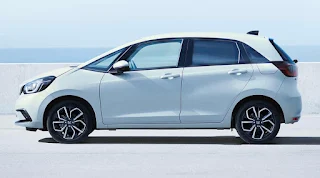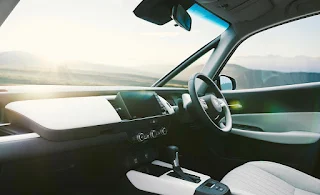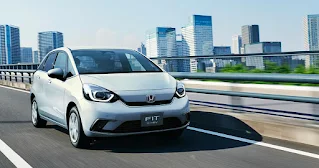The Lexus ES is more than just a glorified Toyota Camry with the Lexus badge in it because back when it was known as the Toyota Vista, then Windom, it was truly recognized as a "world prestige class" saloon that is rich in features and has an impeccable silence fit for a luxury car. Even though Lexus has a presence of Japan, the ES is one of the cars not available in the Japanese market until now...
 |
| 2019 Lexus ES |
For the first time on Japanese roads, the all-new Lexus ES is now available starting at 5,800,000 Japanese Yen, which is very expensive for what's underneath a Toyota Camry but to put in broad context, it's somewhat more affordable than the main opponent, the Audi A6. So, good mark for Lexus on the pricing but actually, no.
 |
| 2019 Lexus ES |
Observing through the styling, the front of the new ES looks vaguely similar to the new Lexus LS, apart from the rakishly trademark Spindle Grille that adorns most Lexus of today, while the sidelines reminded you of the second-generation Mazda Atenza, and the rear view looks like the Hyundai YF Sonata. In other words, it is as Asian as Asian cars can get and speaking of identity crisis aside...
 |
| 2019 Lexus ES interior |
 |
| 2019 Lexus ES interior |
The new ES's interior was heavily influenced by its bigger brother, signalling the future of Lexus interiors, whatever that means. What this interior translates is that all of the main information displays are now into the driver's line of sight such as the LCD instrument panel, optional heads-up display, Lexus Multimedia System, upgraded Remote Touch Interface, and so much more. Focusing on the creature comfort, the new ES can be very nice to chauffeur some rich people, even your Boss Madam wouldn't mind while taking her to the office. While the interior comfort is somewhat Mercedes-level rather than Audi-level, the boot space is now surprisingly bigger and because the battery pack is located underneath the rear seat, you can store less than 17 cubic feet of trunk space along with the secret compartments for smaller items.
 |
| 2019 Lexus ES |
The new ES maybe a new Camry underneath but because it's running on its earful TNGA platform, it's now more comfortable and stable to impress the salarymen. Apart from the platform, the new ES features a reworked suspension that adapts to its surroundings, all thanks to its Dynamic Control Shocks capable of responding to event the smallest movements. Of course, being a luxury car, the new ES comes with a new rack-assist type Electric Power Steering that promises precise steering feel. It feels nice to drive on normal roads but when it's too much to bear, it's going to behave like an Audi A6 per se and even in the F SPORT variant with Adaptive Variable Suspension, it's going to take some dramatic logic to understand the new ES's behavior rather well because being a front-wheel drive car, the struggle really is real.
Because the new ES is a hybrid-only saloon that serves as the replacement for the HS250h, it sports the same new hybrid powerplant as the new Camry, meaning it bears the brand new 2.5L A25A-FXS petrol engine mated to an 88kW electric motor and an old-fashioned nickel metal battery. Fuel economy is around 20.6km/L on the WLTC Mode scale and while focusing more on the hybrid powerplant, the new ES features a parallel shaft gear and a multi-function gear that incorporates a power split planetary ring gear, parking gear, and counter drive gear into one compact unit. The hybrid control system now promises more responsiveness and when engaged to Sport mode, you can take advantage of its paddle shifters to control six simulated gears, which is nice but so-so. Also, there's the new Auto Glide Control system which addresses the one where drivers misjudge the drag imposed by regenerative brakes as they approach a stop and then move back and forth between the brake and the accelerator. Sounds convenient, if you know what I mean.
The new ES boasts most of the groundbreaking safety features under the new Lexus Safety System+ 2.0 such as the Pre-Collision System with daytime bicyclist detection, Lane Departure Assist, new Lane Tracing Assist, new All-Speed Range Dynamic Radar Cruise Control, Road Sign Assist, and many more. However, apart from the many safety features, the new ES comes with a brand new party piece that will get you notice. In the old days, drivers tend to check the side view mirrors and get into the hassle of adjusting it to get the best possible view. In the new ES, it comes with the world's first Digital Outer Mirrors with side-view cameras. Instead of side view mirrors, it uses cameras to provide a live feed display on the left and right screens inside the cabin, allowing for enhanced views of the area around the car at night and in inclement weather. It also offers an expanded view of the car's surroundings by augmenting the display area during turns or reversing.
The bottom line? The new ES may have suffered some identity crisis and the idea that is offered only in hybrid but the interior comforts, the safety features, the pricing that can outflank the A6, and the new Digital Outer Mirrors really makes this glorified Camry a class apart from the rest. It's great to see the Lexus ES arrived in Japan for the first time since forever and there's so much to learn from this glorified Toyota Camry while eating some California Maki on the platter.
Source: Toyota Motor Corporation


















































